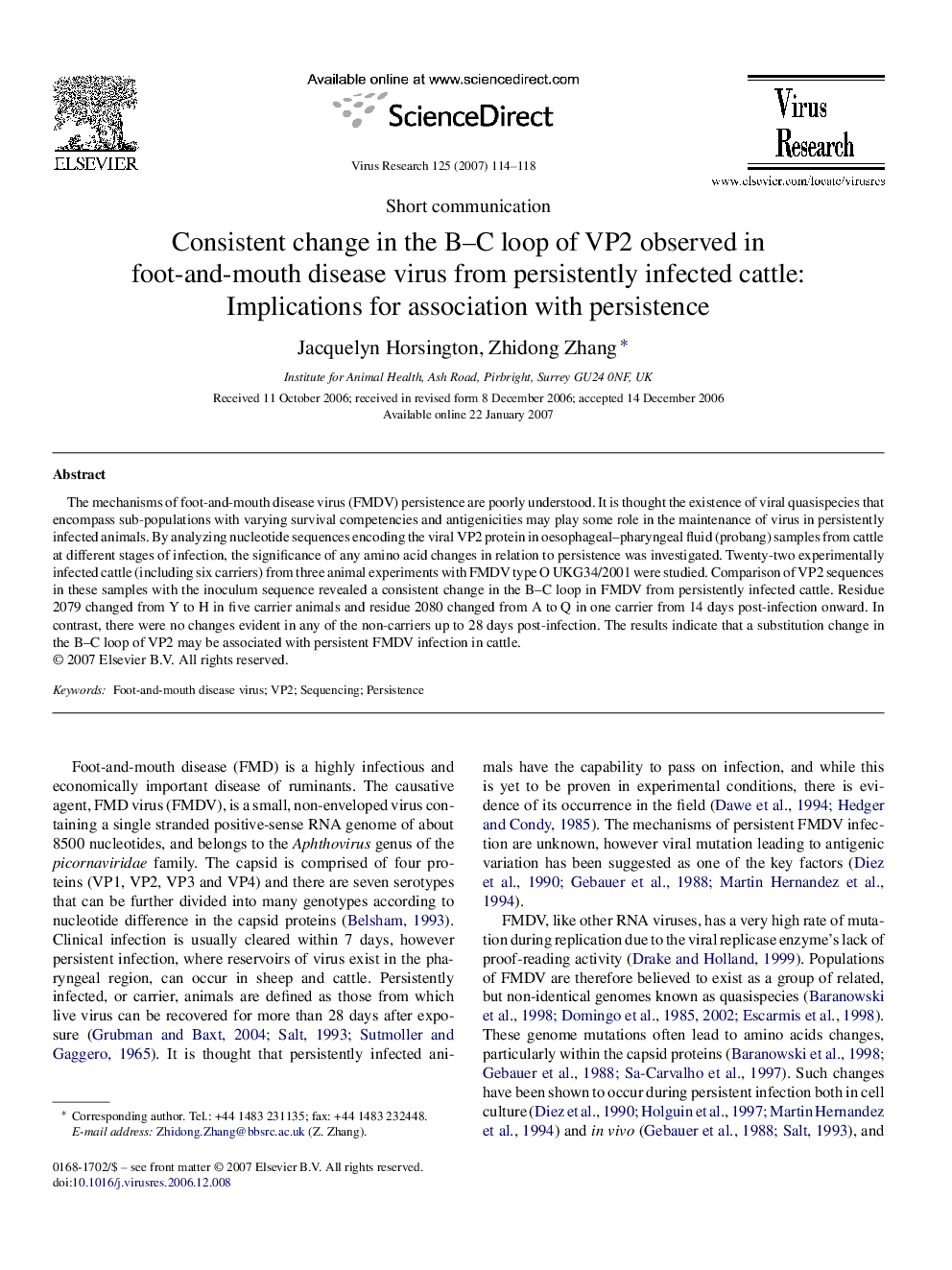| Article ID | Journal | Published Year | Pages | File Type |
|---|---|---|---|---|
| 3430953 | Virus Research | 2007 | 5 Pages |
The mechanisms of foot-and-mouth disease virus (FMDV) persistence are poorly understood. It is thought the existence of viral quasispecies that encompass sub-populations with varying survival competencies and antigenicities may play some role in the maintenance of virus in persistently infected animals. By analyzing nucleotide sequences encoding the viral VP2 protein in oesophageal–pharyngeal fluid (probang) samples from cattle at different stages of infection, the significance of any amino acid changes in relation to persistence was investigated. Twenty-two experimentally infected cattle (including six carriers) from three animal experiments with FMDV type O UKG34/2001 were studied. Comparison of VP2 sequences in these samples with the inoculum sequence revealed a consistent change in the B–C loop in FMDV from persistently infected cattle. Residue 2079 changed from Y to H in five carrier animals and residue 2080 changed from A to Q in one carrier from 14 days post-infection onward. In contrast, there were no changes evident in any of the non-carriers up to 28 days post-infection. The results indicate that a substitution change in the B–C loop of VP2 may be associated with persistent FMDV infection in cattle.
